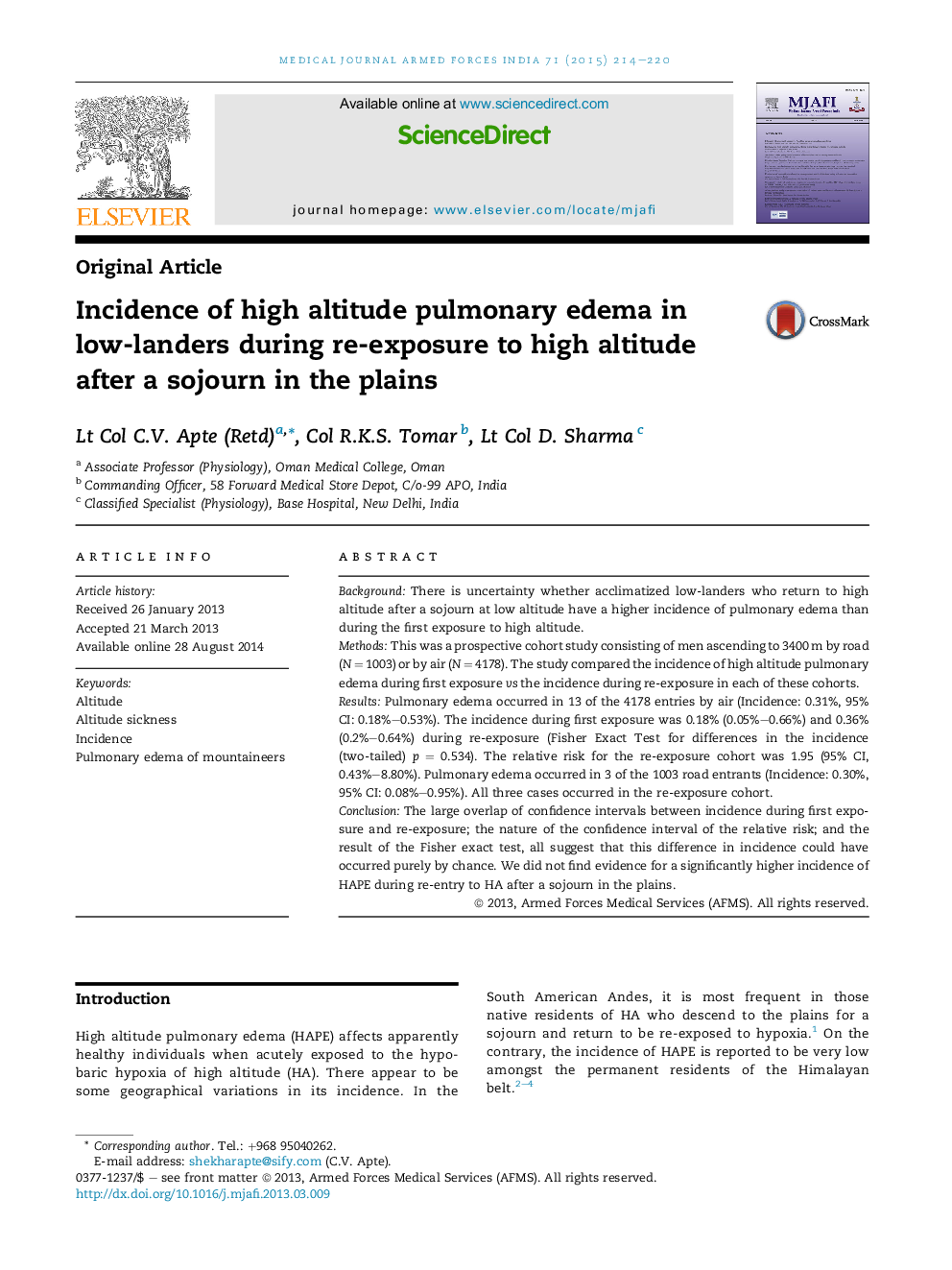| Article ID | Journal | Published Year | Pages | File Type |
|---|---|---|---|---|
| 3160934 | Medical Journal Armed Forces India | 2015 | 7 Pages |
BackgroundThere is uncertainty whether acclimatized low-landers who return to high altitude after a sojourn at low altitude have a higher incidence of pulmonary edema than during the first exposure to high altitude.MethodsThis was a prospective cohort study consisting of men ascending to 3400 m by road (N = 1003) or by air (N = 4178). The study compared the incidence of high altitude pulmonary edema during first exposure vs the incidence during re-exposure in each of these cohorts.ResultsPulmonary edema occurred in 13 of the 4178 entries by air (Incidence: 0.31%, 95% CI: 0.18%–0.53%). The incidence during first exposure was 0.18% (0.05%–0.66%) and 0.36% (0.2%–0.64%) during re-exposure (Fisher Exact Test for differences in the incidence (two-tailed) p = 0.534). The relative risk for the re-exposure cohort was 1.95 (95% CI, 0.43%–8.80%). Pulmonary edema occurred in 3 of the 1003 road entrants (Incidence: 0.30%, 95% CI: 0.08%–0.95%). All three cases occurred in the re-exposure cohort.ConclusionThe large overlap of confidence intervals between incidence during first exposure and re-exposure; the nature of the confidence interval of the relative risk; and the result of the Fisher exact test, all suggest that this difference in incidence could have occurred purely by chance. We did not find evidence for a significantly higher incidence of HAPE during re-entry to HA after a sojourn in the plains.
